 |
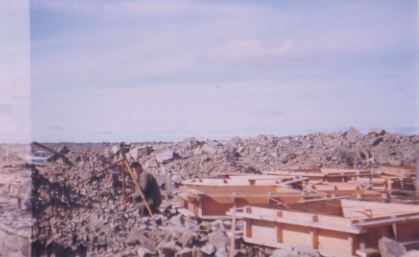 |
 |
 |
 |
 |
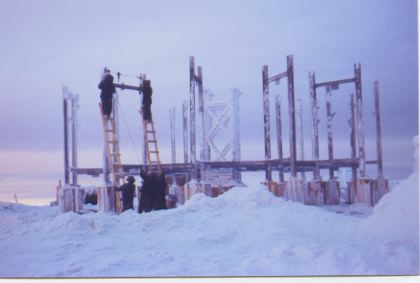 |
 |
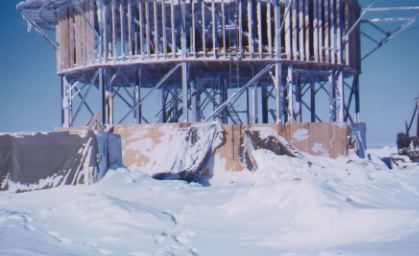 |
 |
EARLY CONSTRUCTION ATOP INDIAN MOUNTAIN
In late July, 1952, Lt John R Dobson, 813th Engineer Aviation Battalion, out of Ladd Field, (near Fairbanks, and now Fort Wainwright), was assigned to Indian Mountain, replacing Lt Ralph Ellis.When he arrived at the mountain top the only facilities were two Quonset huts and a plywood building (shack).His task was to supervise construction of the tower that would then support the air-supported dome, the revolving radar screen, and the necessary electronics equipment (all to be later installed by the Bendix Corporation, Lee Olzar serving as Tech Rep).
The tower foundations proved to be a problem because the rock that formed the top was heavily fragmented (probably by the severe freeze-thaw conditions there and the nature of the rock itself). After much blasting and digging without finding bedrock, John got the powers-to-be to agree to digging as deep as possible, pouring the concrete foundations, and then backfilling around and against them with the loose boulders and rock This has proven successful as evident by the many years that the tower has stood, despite unbelievably harsh weather. The winter of1952/53 recorded a low temperature of more than 70 degrees below zero, Fahrenheit, and extreme wind conditions were routine. The wind blew so hard at times that the Engineer troops were forced to install guard ropes around the top of the mountain to help them from being blown off the mountain. Ropes were also installed between the living quarters and the latrine.even on a trip of 50 feet it was easy to get lost in a blizzard; and remember, during the winter there were only a few hours of daylight. (Indian Mountain lies only 20 miles or so south of the Arctic Circle.)
Foundation construction continued through the late summer, fall, and early winter of 1952. At this near-arctic location and elevation (4234 ft msl) winter comes early. Snows arrive in September and hang around till June. The two most difficult tasks to overcome, besides mere survival, were getting enough water to mix concrete, and keeping the concrete from freezing long enough for it to develop its required strength.
Water was obtained by melting snow and icetwo men were kept busy full-time at this. The concrete foundations were kept warm, at least kept from freezing, by means of Herman-Nelson heaters and canvas. After the foundations were complete, the structural- steel framework was assembled, and the tower was completed and ready for the radome in the spring of 1953. Note in one of the photos that part or the steel structure is being framed in with 2X6's. Space was so scarce at the mountain tops that the area under the radome was closed in with 2X studs and joists, plywood, and tar paper, to provide for living and office space. Because these spaces were heated (almost year-round) with fuel oil stoves, and the construction methods and material were considerably less than fireproof, at least one tower burned down along with all the equipment. Emergency fire- escape facilities for those sleeping in the upper floor consisted of knotted ropes tied to the handrail around the catwalk. Troops were also required to sleep with a knife handy if, in case of a fire and they were forced to seek escape via the catwalk, they could cut their way out of the plastic bubble. Lt Dobson left Indian Mountain in March 1953 and was replaced by Lt Champion.
There was actually another facility at the mountain top. Several hundred feet away on another small peak was a Quonset hut manned by an Air Force Officer and an enlisted man who provided radio support for Indian Mountain. A primitive precursor, I suppose, of White Alice. This radio station was generally conceded to the place where, if Alaska needed an enema, the tube should be inserted.
Finally, Lt Dobson bragged about his one 'claim to fame'.that his unit had the lowest VD rate in the Army
 |
 |
 |
 |
 |
 |
 |
 |
 |
 |
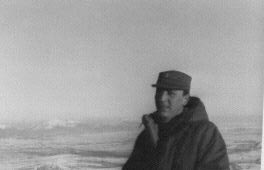 |
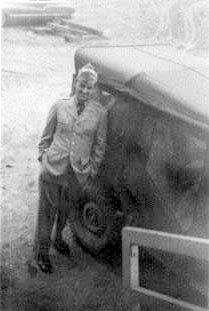 |
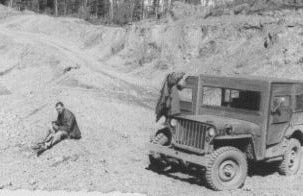 |
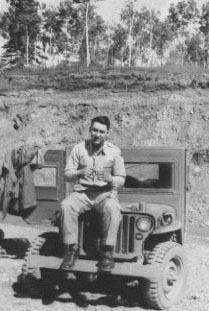 |
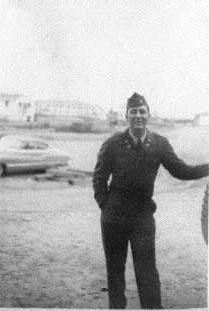 LADD
FIELD 1952 LADD
FIELD 1952 |
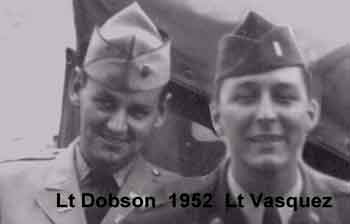 |